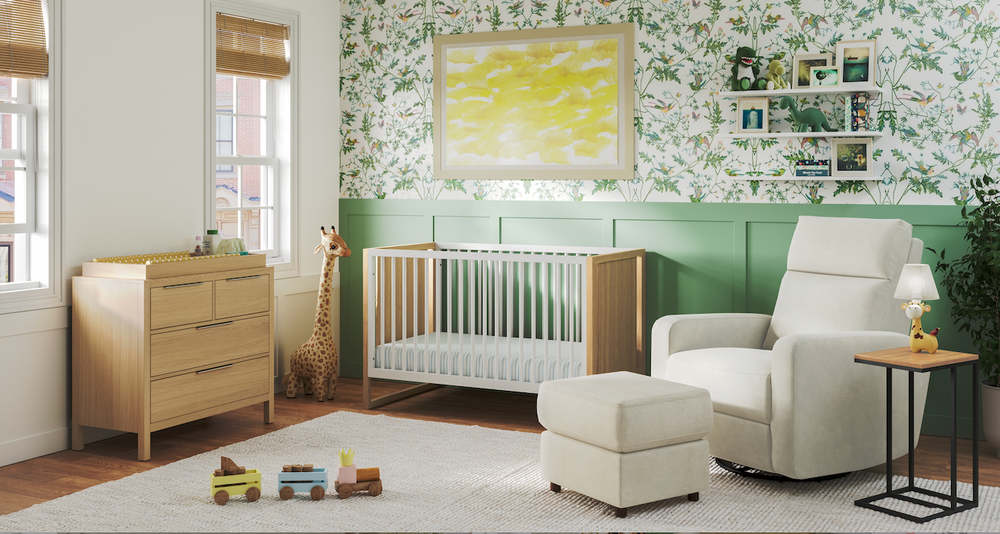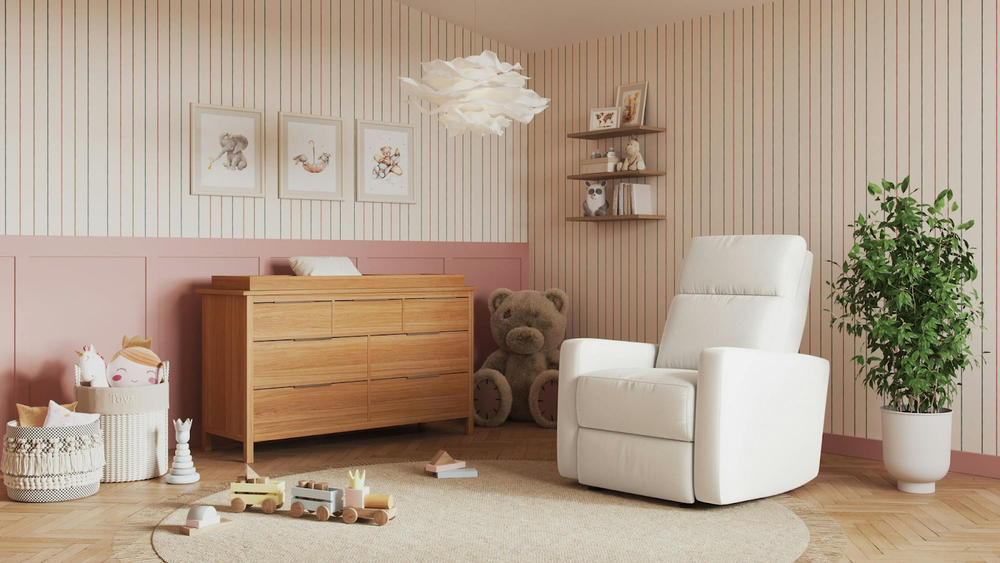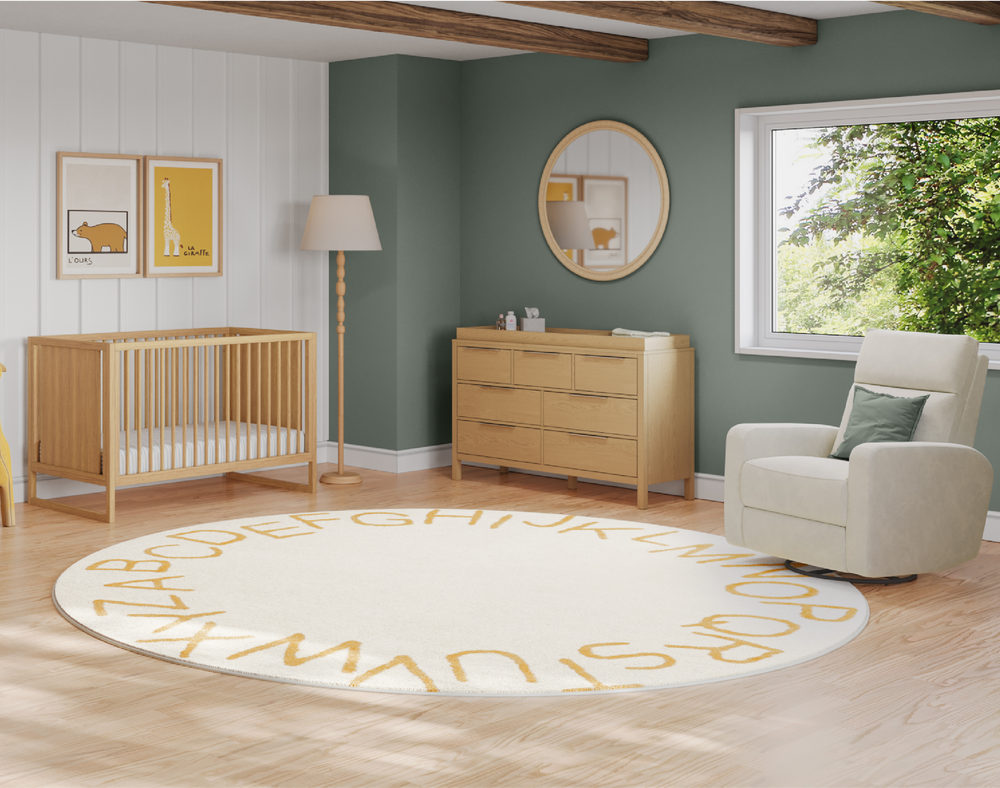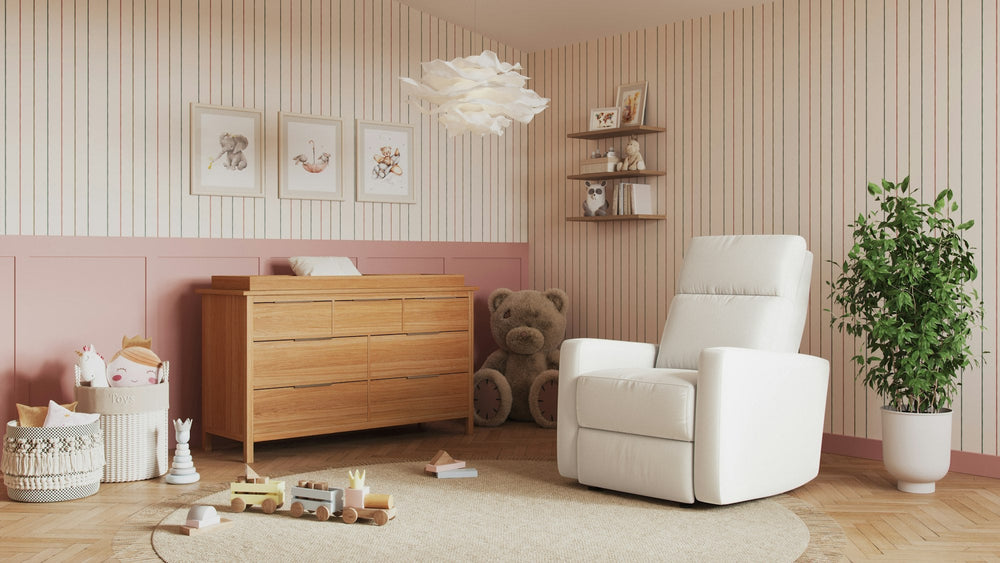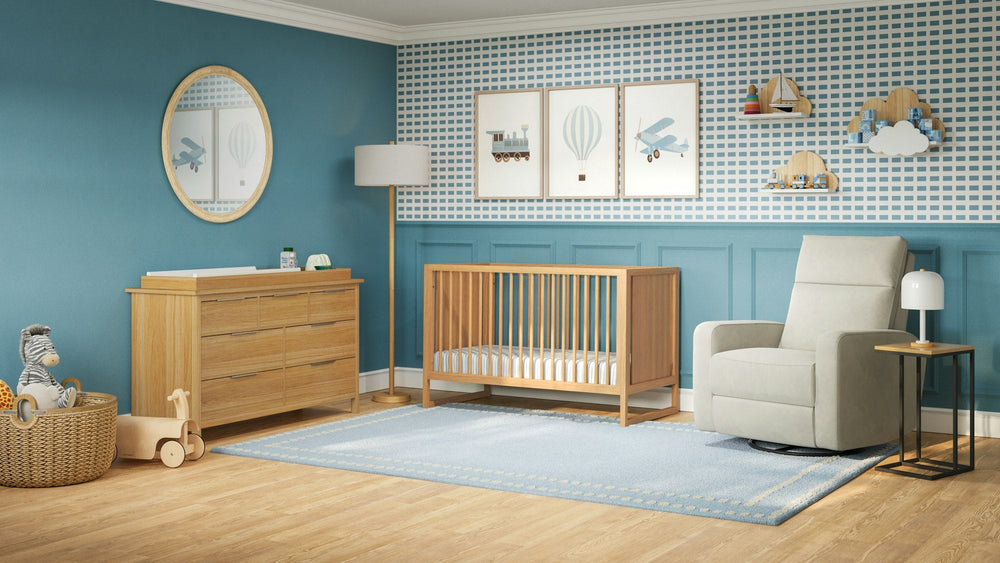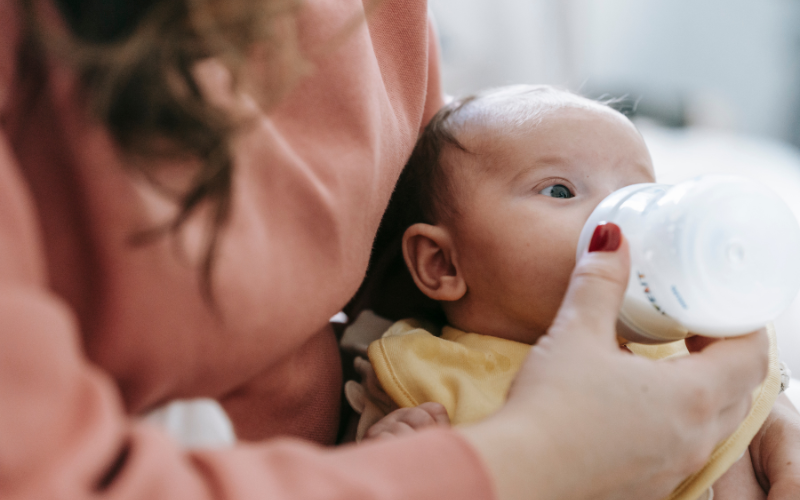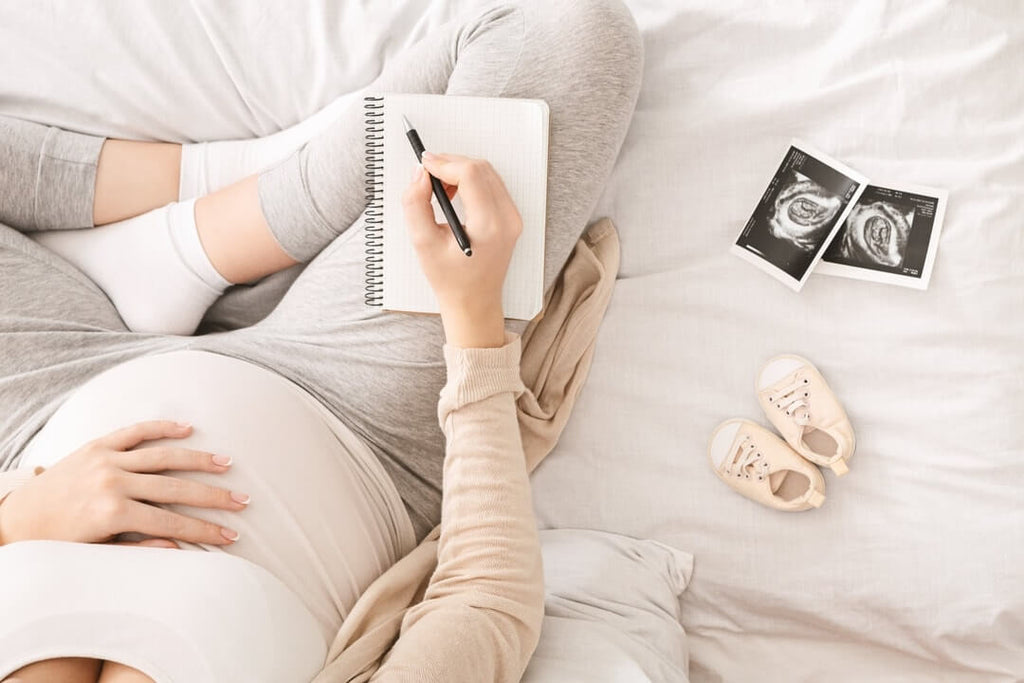
Few things are more fun than roaming the aisles of a baby store and choosing items for your baby; browsing tiny outfits, checking out the adorable bedding, and playing with toys.
But it can also be overwhelming; how much and what do you actually need? What items do you need immediately, and what can wait?
Don’t worry though, we’ve got your back - use this guide as the essential baby registry checklist. Read on to discover the ins and outs of what to include —and leave off— your baby registry.
What is a Baby Registry Checklist, and why do you need one?
A registry checklist is a narrowed-down list of the essential items you should include on your baby registry. Babies need a ton of supplies, so walking into a vast baby shop or browsing online can quickly become overwhelming.
A registry checklist will help you stay organized and focused; however, it is okay to add a few items here and there spontaneously. Each couple will have their individual registry needs, but there are a handful of areas all new parents should have covered.
Check with the stores you are interested in registering with to see what perks they offer. For example, some stores will allow returns of anything purchased directly from your registry without a receipt.
Another perk is a discount on unpurchased items off your registry for a time period, sometimes until your baby’s first birthday! If you decide to register with multiple stores, an increasing trend, consider keeping your own checklist of items you’ve received versus what you still need.

When, where, and how to make a Baby Registry Checklist?
While it’s tempting to start making a registry in your first trimester, you probably should wait until the beginning of your second trimester to dig in and complete your registry.
By week-20, you’ll likely know if you’re having a boy or a girl, and while that won’t make a difference for some essential items, it may affect your nursery decor and clothing selections. Or maybe to some parents this is not important.
Even if you’re waiting to find out the baby’s gender or opting for more gender-neutral selections, baby showers typically aren’t held until the third trimester.
Most stores offer the ability to build your registry entirely online. If you’d rather have the chance to touch and see things in person, head to customer service or the registry department of any major retailer or baby boutique to get started.
Check store policies about shipping speed and costs as that can impact a person’s decision on what to buy and how much to spend. Nurture& gliders include free shipping for orders over $650 and free returns, meaning you can purchase with confidence.
Items to include on your Baby Registry Checklist

Diapering
You will need a few essential items in the diapering department, but limit requests for diapers and wipes. Your baby may have an allergy or develop a diaper rash from certain brands. Avoid stocking up on newborn diapers as most babies outgrow them quickly.
Opt instead for size one diapers - and even then, register sparingly, as you won’t know the size of your baby and their growth rate until they’re here. If you decide to use cloth diapers, register for them to cut down start-up costs.
Diapering Essentials: diaper bag, diaper cream, vaseline, aquaphor, changing table, changing pad, changing pad covers, diaper pail, portable changing pad for diaper changes on the go
Bathing
Baby bathing essentials are extensive. However, keep in mind your little one won’t need a bath nightly, and sponge baths are a must until the umbilical cord area is healed.
Bathing Essentials: towels, baby body wash, baby shampoo, washcloths, lotion, nail clippers, water temperature duck, bath toys, and baby bathtub.
Clothing
Baby clothes are a joy to pick out, but don’t go overboard. Many babies will only fit in those adorable newborn and 0-3 month outfits for a few weeks. So spread the wealth out by asking for a wide range of sizes to outfit your baby for his or her first year.
Clothing Essentials: bodysuits or onesies, socks, mittens, booties, swaddles, sleep sacks, nightgowns or pajamas, pants or skirts, and baby-safe laundry detergent. Depending on the weather and where you live, you may also need a jacket, hats, and shoes. Find the softest cotton in the world here.

Feeding
Whether you are breastfeeding or not, you will need nursing pads for when your milk comes in. If you decide to bottle feed either with formula or pumped breast milk, consider purchasing individual bottles from a few different brands to try first.
Some babies will latch onto any type, and others are very particular. You don’t want to spend a ton of money on bottles that your baby is not willing to use! Before you add a breast pump to your registry, contact your health insurance first to see if they will cover the cost.
Feeding Essentials: nursing pads, nursing bras, nipple cream, breast pump, breast pump accessories, milk storage bags, baby bottles, bottle brush, burp cloths, nursing pillow, nursing cover, bibs, high chair, and bottle drying rack.
Save items like baby food, sippy cups, and utensils until later. You could even ask for plates, cups, etc., for your baby’s first birthday.
Nursery
Designing the nursery is one of the most memorable things parents do before their baby arrives. Setting up the decor and furniture somehow makes the baby’s arrival much more real.

In addition to a crib and changing table, you’ll need a comfortable place to sit. Nurture& gliders are designed with comfort, functionality, and the whole family in mind and are built to last.
Nursery Essentials: Crib or bassinet, dresser, changing table, glider, ottoman, crib mattress, crib sheets, waterproof mattress pads, swaddling blankets, baby monitor, and night light.

Baby Gear
Babies require a lot of gear. What you need may be different based on your location and living style, but most parents opt to have both a stroller and a baby carrier for transportation. There are different types of car seats; you will need to decide if you want a convertible car seat or an all-in-one travel system that connects to a stroller.
Baby Gear Essentials: stroller, wearable baby carrier, bouncer or swing, pacifiers, Playard and car seat.
Medical
Unfortunately, babies get sick, and while it is usually nothing to worry about, there are a few things parents should have on hand to ease their baby’s discomfort. You’ll want to be prepared with these items, even when you’re on the go.
Medical Essentials: infant fever reducer/pain reliever and medicine dispenser, nasal aspirator, teething toys, humidifier, and thermometer.
Playtime
A new baby does not need a lot of toys. Their parents’ faces and voices are enough stimulation at first. But, if you’d like to include some toys on your registry, consider items with large bold patterns, black and white, or primary colors, as babies have limited vision their first few months.
Other great options is a cushioned playmat to help absorb the tumbles, jumps, wiggles, and everything in between.

Items to leave off your baby registry checklist
Baby wipe warmer and bottle warmer
A wipe warmer is unnecessary, as you won’t be using warm wipes when out on the go or in child care, so why bother at home? A bottle warmer is another extra expense. A large mug of hot water does the same thing. A sterilizer is probably another non-baby essential as most dishwashers have a sterilizer setting. Boiling items in hot water and placing items in the sun will also sanitize them.
Crib bumpers
You should not use crib bumpers as they can increase the risk of SIDS (sudden infant death syndrome) and suffocation. Health experts have long pushed to outlaw crib bumpers, and some states, including Maryland, Ohio, and New York (along with cities Watchung, New York City, and Chicago) have outlawed their distribution due to the associated risks.
Dressy clothes
Don’t waste precious registry space with dressy clothes. Your baby will likely never wear them, and there are other registry items you want people to focus on. Additionally, fancy and delicate outfits will not withstand frequent washings or hot rinse cycles when spit up and blowouts occur. Consider adding only one or two outfits if you plan to do a photoshoot with your newborn.
Drop-down cribs
Most new cribs will not even offer this option, but should someone offer you an older crib, make sure it meets the current standards set by the U.S. Consumer Safety Product Commission. Drop-down cribs present the danger of entrapment and suffocation.
Tons of toys
In the first year of your baby’s life, they do not need a lot of toys. People get carried away with all the flashy and colorful toys out there, but infants don’t need that much.
Instead, consider adding a baby bouncer or play mat. Board books are another great option since reading to infants improves their language, and strengthens the bond between you and your baby.
By following these recommendations, you will make the process less overwhelming and make the most of the list so your baby has everything he or she needs.



